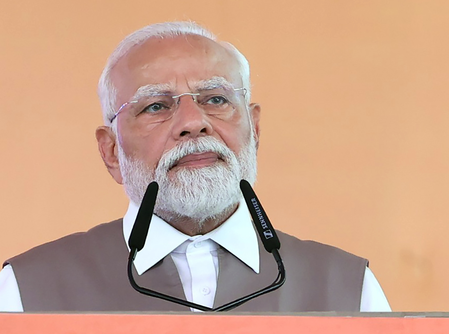
New Delhi: Besides the ‘Sabka Saath, Sabka Vikas’ pledge, the goal and vision of achieving ‘Digital India’ is beginning to realise as this forms the core of governance of the incumbent dispensation.
The digital revolution, which began 11 years ago, is entrenched in almost every policy-making and public welfare scheme delivery with elaborate plans on how to bring benefits to the poor, downtrodden and marginalised sections.
Prime Minister Narendra Modi took to the social media platform X on Thursday and wrote about “leveraging the power of technology in bringing innumerable benefits for people”.
“Service delivery and transparency have been greatly boosted. Technology has become a means of empowering the lives of the poorest of the poor,” he further said.
Here is a look at how the Digital India mission unlocked opportunities for millions:
The Digital India initiative, launched by PM Modi in his first term, has gone on to reshape the way the country has grown and developed in the past decade. The governance has become transparent and accessible for every citizen, while it has also unlocked massive opportunities for the common citizen.
Direct Benefit Transfer (DBT) marks one of the biggest hallmarks of the Modi government as it ensured seamless and leakage-free delivery of public welfare funds and schemes to crores of poor households. Today, the villages have access to internet services, while the digital payment system is also reaching the rural belts.
DBT transfers
Today, there are more than 322 schemes across 56 ministries covered under the DBT. More than Rs 44 lakh crore has been transferred directly into the accounts of beneficiaries, while Rs 3.48 lakh crore has been saved by cutting out leakages and preventing middlemen.
In the past ten years, there has been a 90-fold increase in DBT transfers, marking a new era of public welfare delivery, laced with speed and transparency.
Aadhaar: The World’s largest digital ID system
Aadhaar – a unique identity of every citizen is powering the country’s digital identity revolution.
Today, every citizen of the 140-crore population has a unique 12-digit Aadhaar number. Aadhaar authentication transactions have crossed 150 billion mark.
DigiLocker making India paperless
DigiLocker, an application that facilitates document storage online, has given strong impetus to paperless governance. As per official estimates, there are more than 52 crore registered Digilocker users in the country, with over 852 crore documents issued.
Jeevan Pramaan
Under the Jeevan Pramaan yojana, technology was harnessed to bring dignity to human lives. Jeevan Praman Patra has simplified life for pensioners by providing hassle-free digital life certificates.
Today, more than 10 crore pensioners are registered, which means they no longer need to visit banks for giving “life certificates” in person.
More than 143 lakh ‘Digital Life Certificates’ have been submitted since November 2024.
UMANG: One platform for all services
UMANG App has been instrumental in converging all government services on one platform. It has become a single digital gateway for accessing more than 2,000 services across various government departments. As per records, there are over 8.21 crore registered users, with over 597 crore transactions.
Pradhan Mantri Gramin Digital Saksharta Abhiyaan is another scheme with far-reaching implications. It has gone a long way in bridging the digital divide in rural India.
